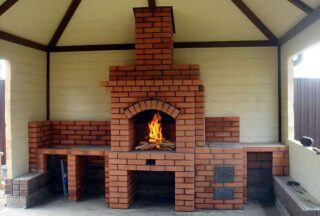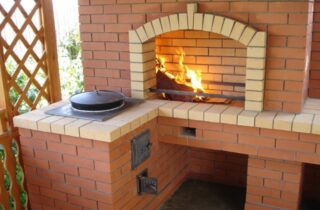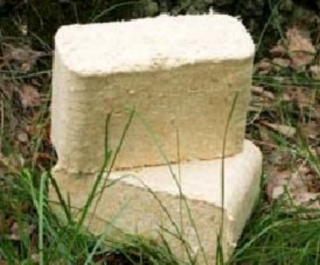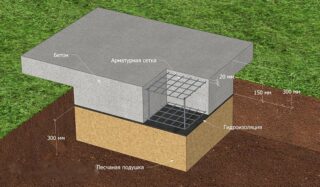Having built a barbecue grill for a summer residence with their own hands, the owners will have at their disposal a convenient and functional culinary facility. To make a high-quality barbecue oven at home, you need a little time and effort, taking into account certain details and nuances.
The origin of the barbecue and how it works

The history of recipes for cooking on grates dates back to the discovery of America, where seafarers were interested in the way Indians baked meat in baskets woven from raw branches. The technology was brought to Europe, where the devices were modified several times.
In order to properly build a barbecue in the country with your own hands, you first need to figure out how products are prepared. The principle of operation of the structure is to thermally influence food due to the release of heat from embers.
The barbecue is simple but effective. The device is a container with a lid. At the bottom there is a fuel pan, and a little higher is a steel grate for food. When the coals reach the desired condition, the lid closes, a strong heat forms inside, and the combustion products are removed through the gap left.
Differences from the barbecue are in the use of a grate, an almost closed chamber and an even distribution of heat. As a result, food heats up from all sides, eliminating the possibility of charring on one side and a damp state on the other.
Barbecue benefits

A well-thought-out and correctly assembled homemade barbecue maker has the following advantages:
- ease of cooking, since there is no need to stir and turn the roast;
- the food turns out to be healthy and healthy, since oils and fats are not used, except for a little sauce;
- natural way of processing, preserving the natural properties of products;
- a small amount of smoke, which is comfortable for the cook and safe for guests;
- fast cooking due to the even distribution of heat in the chamber;
- minimum amount of waste - only ash remains, which is a good fertilizer.
When handled correctly, a self-assembled barbecue grill is absolutely fire and environmentally safe.
Varieties of devices

The barbecue maker can run on the following fuel:
- firewood;
- briquettes;
- charcoal;
- natural gas;
- electricity.
Each option has its own pros and cons, the decision is made individually, based on the circumstances.
Stoves are assembled in the following versions:
- Stationary. Made of stone or brick. They are often complex with several braziers, arches, hobs and cutting tables.
- Mobile. They have their own wheels, which allows you to install the stoves in any convenient place, and after the end of cooking, roll them up under a shed or in a shed.
- Portable (transportable). They are made in folding or collapsible versions. The various models range in size from a briefcase to a travel suitcase. They are transported in hiking backpacks or vehicle trunks.
Braziers can be square, round, rectangular and oval in shape. Some are convenient, others are practical and durable.
Accommodation options
When choosing a place to place a hearth, it is necessary to focus on the following criteria:
- dry platform on an elevation;
- convenience of approach at any time of the year;
- safe distance from combustible objects;
- compliance with the surrounding landscape design;
- the direction of the wind is not towards the residential building and neighbors.
The best option for installation may be a platform in front of the house or next to the gazebo. There, the street hearth will not interfere with anyone, the recreation area is nearby, there are paths, communications are easy to lay.
Preparation for construction

Any construction begins with design. Initially, you need to decide on the material of manufacture.
The options can be as follows:
- Metal. Cast iron or refractory steel is used. An old gas cylinder is a good stock. The product is durable, strong, has an optimal shape for the hearth. Cast iron has excellent heat capacity, but is difficult to process and brittle.
- A rock. Hot-fired fireclay and clay bricks are used. The building's body is laid out from the blocks, and the brazier is already made of metal.
Having decided on the material, detailed drawings and diagrams should be made. It is necessary to choose the correct dimensions corresponding to the idea of the structure. The optimal height of the hearth is 80 cm, depth 14 cm, width 25 cm and length 100 cm. Such dimensions are convenient for the cook, they will allow cooking a variety of dishes not only on the grill, but also on skewers, in a cauldron, a saucepan and a frying pan. The general parameters of the building are determined by the additional options that are planned to be installed.
Construction technology

A step-by-step instruction for the construction of a barbecue complex consists of several sequential steps:
- Foundation. The best option is a reinforced concrete slab 30 cm wider than the base of the furnace. For stability, the slab is attached to the posts lowered into the ground below the freezing point. The base rises above the ground surface by 5-10 cm.
- Laying out the furnace body. Depending on the chosen and developed project, it is made in the form of the letters "P" or "W". The first rows, which serve as a plinth, are made of fired bricks. The walls of the brazier are laid out from chamotte blocks. The mortar is mixed from clay, sand and cement.
- The bases for the pallet and the lattice are embedded in the masonry. If necessary, the pallet can be removed, the grates can be installed and the stove can be fired with coal.
- An arch is displayed above the brazier, a hole is left in it and a chimney is laid. It is better to make it double - lay out a brick shell on the outside, and lay an iron or ceramic pipe inside.
- Drying and heating. The oven must dry for at least three days. Then it can be gradually warmed up with paper, a splinter, and then with firewood. In total, it takes 8-12 hours.
- Decorative finishing. A fully dried barbecue complex is finished with materials that are resistant to strong heat and weather conditions. You can choose clinker tiles, tiles, natural and artificial stone, facade plaster.
A properly built barbecue oven can stand in the yard for decades, delighting more than one generation with its look and delicious dishes.








